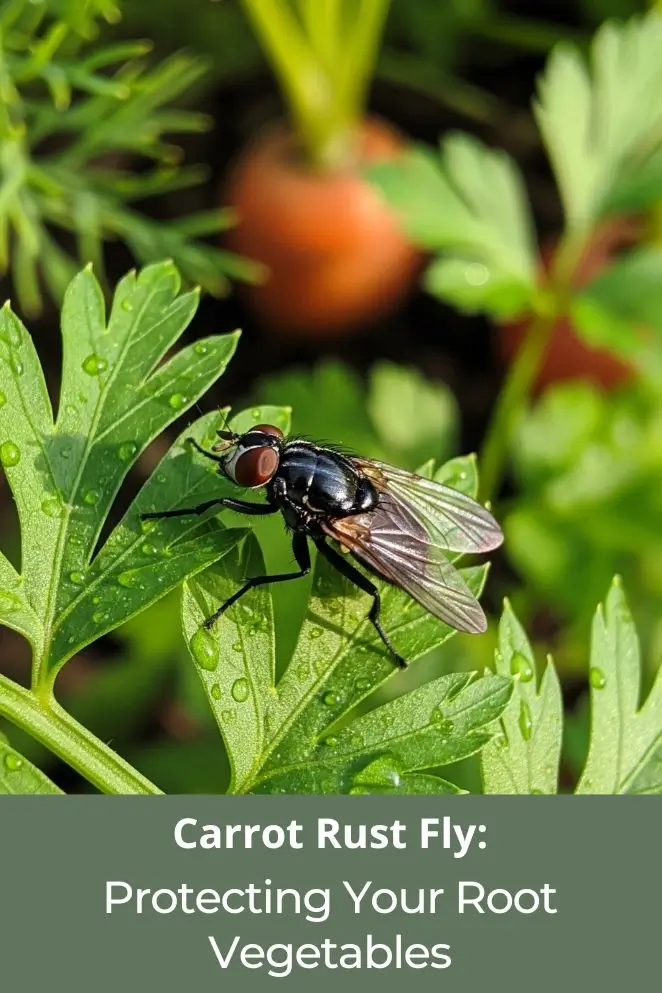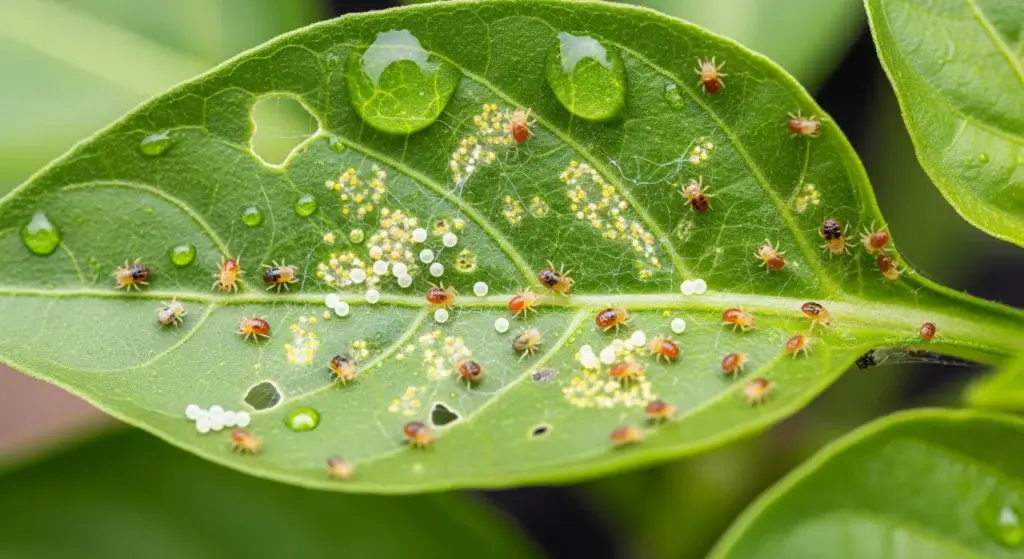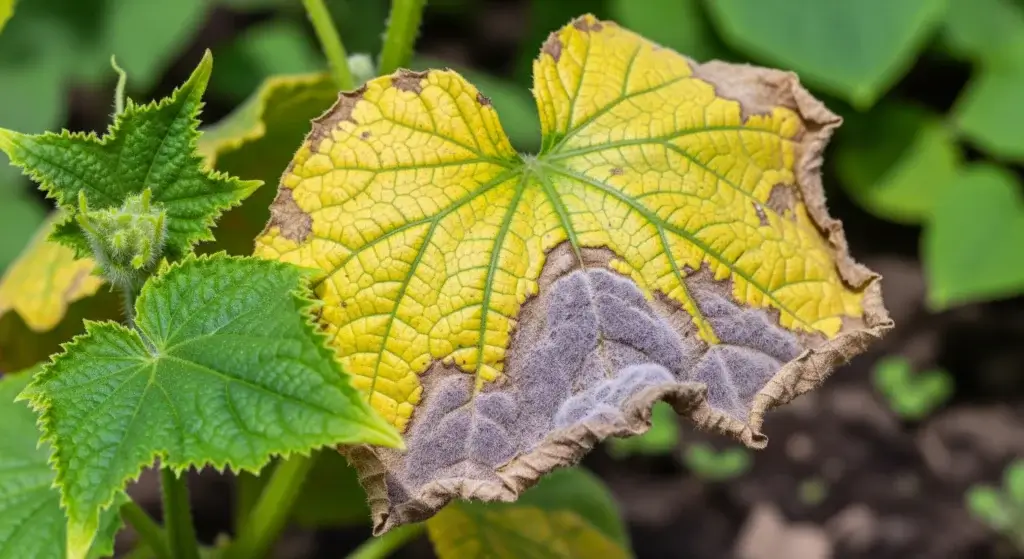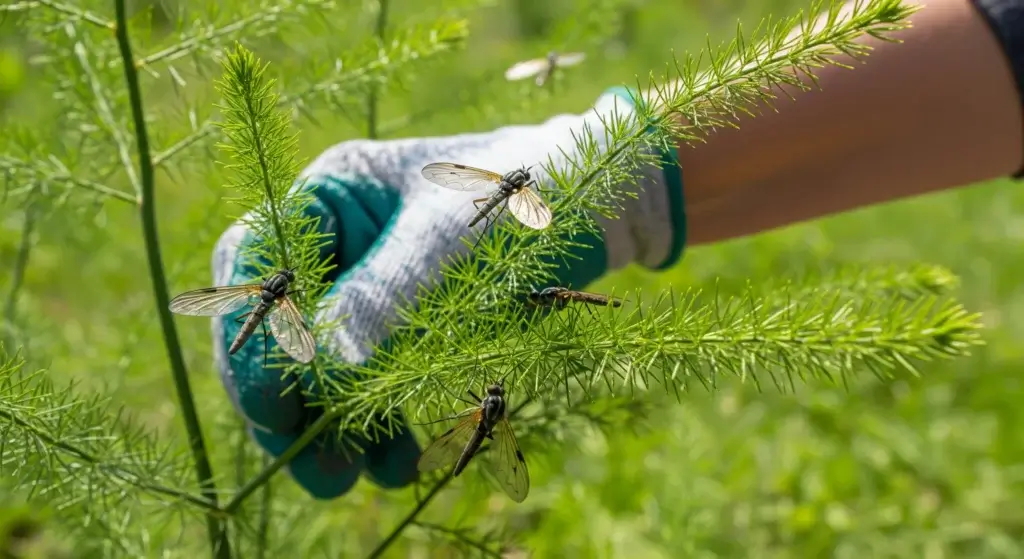
If you’ve ever pulled a carrot from the soil only to find it riddled with nasty little tunnels, then you’ve encountered the carrot rust fly.
These little bugs can decimate an entire crop of carrots, parsnips, et al.
Being able to identify them, prevent them, and combat them is crucial if you’re truly seeking healthy roots and not a disappointing, nibbled-on crop.
Understanding the Carrot Rust Fly Life Cycle
The way carrot rust flies function is dependent on their particular abilities.
During the winter, they act as larvae that conceal their remaining roots before commencing their fecal offspring in the spring.
During the months of mid-April to mid–June, adults appear and spend time in hedges or on tall grass near your garden.
Females lay eggs in the soil near carrots, and after a few days, tiny maggots will tunnel to feed on the roots.
Over a period of one month, these small yellowish-white creatures grow and cause chaos as they consume.
Once they’re finished, they sink back into the soil to pupate and prepare to start the process over.
Simply put, blinking is a sign of the impending root-eating frenzy.
Recognizing Carrot Rust Fly Damage
Catching carrot rust fly trouble early is the difference between a decent harvest and a total disaster.
These pests leave clues both above and below ground, though the nastiest signs show up in the roots.
Above-Ground Symptoms
Your plants will try to give you hints:
- Wilting and stunting: Sickly carrots are short, wretched, and considerably less active than their disease-free counterparts.
- Leaves that are discolored: Reddish-brown, scarlet, or yellow leaves are a huge red flag.
- Dieback of the plant: At its worst, the entire plant wilts and dies.
- Subpar overall growth: Root damage just equals your plants just aren’t able to achieve their full potential.
Below-Ground Damage
The real nightmare lives underground:
- Rusty-brown tunnels: The signature damage—dark, rust-colored tunnels eating through the carrot’s outer layers.
- Surface scarring: Roots may be pitted, scarred, and unattractive.
- Bitter taste: Nothing can ruin a snack faster than this.
- Rot risk: The danger of rot arises from the fact that bacteria and fungi can quickly devour damaged roots.
- Stunted or forked growth: Young carrots might grow all weird—bulbous, forked, or deformed.
Ignore it, and your entire crop could end up totally inedible.
Prevention Strategies: Your First Line of Defense
The best way to deal with carrot rust flies? Don’t let them crash your party in the first place.
Stopping them before they invade saves a ton of headache and ruined carrots.
Physical Barriers
These flies are lazy fliers, so a little barrier goes a long way:
- Row covers: Pop on light mesh or fabric at planting time—imagine a pepper-proof blanket for your carrots.
- Vertical barriers: Construct a 2-foot tall barrier around beds using mesh, plastic, or fleece. Keeps flies away like an invisible force field.
- Barrier installation: Tuck the edges slightly into the ground so devious flies can’t burrow underneath them.
Strategic Planting Timing
Timing is everything when it comes to carrot rust flies:
- Late planting: Plant late May or June in temperate climates so that you avoid the first infestation of adult flies.
- Early harvest: Plant crops with quick maturation so that you harvest before even the flies show up.
- Multiple plantings: Provide your crops with space so that nothing is exposed simultaneously. It is hedging your bet not to get completely ruined.
Garden Hygiene and Cultural Practices
Clean gardens = fewer pests:
- Complete harvest: Pull all carrots and related crops at season’s end—no leftovers for larvae to hide in.
- Debris removal: Toss all plant bits, even tiny root fragments, because larvae love hiding there.
- Weed management: Keep weeds in check, especially those in the carrot family—they’re basically party houses for rust flies.
- Soil cultivation: A little fall digging can expose larvae to predators and harsh weather, which is basically nature’s pest control.
Do all this, and your carrots will have a fighting chance—trust me, skipping even one step is how I ended up with a root full of little tunnels one year.
Monitoring and Detection Methods
Eradiating carrot rust flies early is like finding a puncture in your bicycle tire—nip it in the bud now, or you’ll regret it later.
Some simple tricks can allow you to chase these insects before they complete their work on your carrots.
Yellow Sticky Traps
Think of these as bug flypaper with a purpose:
- Placement: Stick them low, right near the soil, since carrot flies are lazy fliers and stay close to the ground.
- Timing: Get them up in early spring, before the first wave of adults shows up.
- Trap angle: Weirdly enough, setting them at a 45-degree angle works better—don’t ask me why, science just says so.
- Monitoring frequency: Check them weekly, especially when flies are at their busiest.
Regular Plant Inspection
Traps are great, but your own eyes are still the best tool:
- Weekly checks: Take a stroll and look for plants that seem droopy, discolored, or just sad.
- Root sampling: Every so often, dig up a carrot or two to see if larvae are hiding out.
- Record keeping: Write down what you spot. Patterns will pop up, and you’ll start predicting their moves like some kind of carrot-fly detective.
Effective Control Methods
Good, so prevention failed, and now carrot rust flies are taking over your garden for nothing.
Don’t lose it—you still have a lot of tricks up your sleeve to eliminate them before they ruin everything.
Biological Controls
Mother Nature’s got your back with some bug-on-bug warfare:
- Parasitoid wasps: Small wasps such as Chorebus gracilis and Eutrias tritoma are the larva killers.
- Ground beetles: Ground beetles (Aleochara sparsa and company) eat pupae and larvae underground like a midnight snack.
- Encouraging good guys: Plant flowers of all colors and varieties and forgo the all-kill sprays so your bug bodyguards remain.
Organic Treatment Options
If you’re more into “eco-warrior mode,” these natural hacks help:
- Beneficial nematodes: Think microscopic worms that invade and destroy carrot fly larvae—like a horror movie in the soil.
- Diatomaceous earth: Dust the stuff on the ground; it’s like walking barefoot on Legos for the flies.
- Essential oil repellents: One gardener favorite is rosemary or tansy sprays. Bonus: your garden smells like a spa.
Chemical Controls
If things are really out of hand, you might need to bring in the heavy artillery:
- Granular insecticides: Mix these into the soil when you’re planting, so larvae hit a chemical wall from day one.
- Soil drenches: Liquid treatments that soak the soil and zap larvae before they go ham on your carrots.
- Timing: The earlier you act, the more effective this is—wait too long, and it’s like closing the barn door after the horse bolted.
Pro tip: Always follow the instructions (seriously, don’t wing it) and remember chemicals can also knock out the good bugs if you’re not careful.
Integrated Pest Management Approach
Here’s the deal: beating carrot rust flies isn’t about throwing one magic solution at them—it’s about playing the long game with a mix of strategies, aka Integrated Pest Management (IPM).
Think of it like building a solid defense team in a video game.
- Prevention first: Don’t wait for the drama to start. Physical barriers and clean gardening habits are like putting locks on your doors before the thieves show up.
- Monitoring: Use sticky traps and check your plants regularly. It’s basically pest stalking—but in a good, necessary way.
- Targeted intervention: Don’t just spray stuff on a random schedule. Act when you see signs of trouble. It’s like waiting until the boss fight to unleash your ultimate move.
- Evaluation: After the battle, check what actually worked. Adjust your tactics for next season so you’re even stronger.
It’s not about perfection—it’s about learning each round, upgrading your strategy, and making sure those flies never get the upper hand.
Conclusion
Beating carrot rust flies is not about discovering the silver bullet answer—it’s understanding their ways, being proactive on prevention, and moving fast when they arrive.
If you move early with barriers, traps, and clever timing, you can preserve your carrots, parsnips, and the rest of their vegetable relatives from being worm hotels.
The secret? Continue to learn with each season.
See what you by chance find yourself with in your garden and adjust along the way.
With persistence and patience, you’ll be lifting tidy, crunchy carrots rather than miserable, tunnelled ones—and I guarantee that first ideal harvest is glorious.



